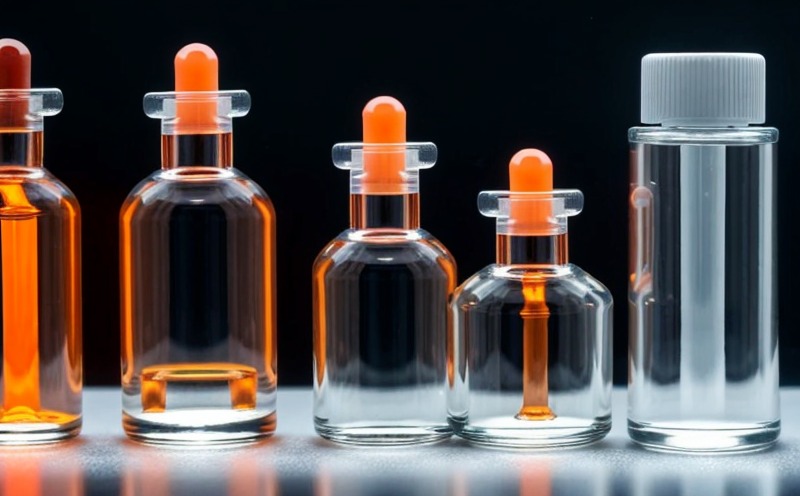ISO 10993 5 In Vitro Cytotoxicity Testing of Nanomaterials
The International Organization for Standardization (ISO) has established a series of standards to ensure the safety and effectiveness of medical devices. One such standard, ISO 10993-5, provides guidelines for in vitro cytotoxicity testing of materials that come into contact with biological systems. This service focuses on assessing the potential adverse effects of nanomaterials through this standardized protocol.
Nanomaterials possess unique properties due to their small size and large surface area, which can significantly influence their interaction with biological systems. These interactions may range from inert behavior to significant toxicity. To ensure that these materials are safe for use in medical devices, ISO 10993-5 provides a comprehensive framework for conducting in vitro cytotoxicity tests.
The testing involves exposing cell cultures to nanomaterials under controlled conditions and monitoring changes over time. The primary endpoints include assessing cellular viability, proliferation, and morphology. This approach allows for the early detection of any harmful effects that could arise from prolonged contact with these materials.
Our laboratory adheres strictly to ISO 10993-5 standards during each test, ensuring accuracy and reliability in our findings. By following this protocol, we ensure consistency across all samples tested, providing clients with consistent data they can trust when making decisions about material safety.
The process begins by preparing the nanomaterials according to specified protocols outlined within ISO 10993-5. Once prepared, these materials are then exposed to cell cultures in a controlled environment. Over time, observations are made regarding cellular responses such as viability rates and metabolic activity levels.
Our team employs advanced microscopy techniques along with biochemical assays to measure various markers indicative of cytotoxicity or genotoxicity if necessary. These methods allow us not only to identify potential risks but also provide detailed insights into mechanisms behind observed effects which can be crucial for further research and development efforts.
In addition to adhering strictly to ISO 10993-5, we incorporate industry best practices ensuring robustness in our testing procedures. Our state-of-the-art facilities equipped with cutting-edge instruments support comprehensive evaluation of nanomaterials' biocompatibility characteristics.
| Use Case/Application Example | Description |
|---|---|
| Development of Drug Delivery Systems | Cytotoxicity tests help identify safe concentrations and optimal delivery methods for drugs encapsulated within nanomaterials. |
| Biocompatible Coatings on Implants | Evaluating the compatibility of coating materials with surrounding tissues to minimize adverse reactions post-implantation. |
| New Material Formulations for Medical Devices | Determining whether newly formulated nanomaterials meet regulatory requirements regarding safety before commercialization. |
| Environmental Impact Assessments | Evaluating potential environmental impacts when releasing engineered nanoparticles into aquatic ecosystems or soil. |
| Consumer Product Safety Evaluations | Ensuring consumer products containing nanomaterials do not pose health risks to end users through rigorous in vitro testing. |
| Bioanalytical Research Projects | Supporting academic and industrial research projects focused on understanding the interactions between nanomaterials and biological systems. |
Industry Applications
The application of ISO 10993-5 in vitro cytotoxicity testing extends beyond just medical devices into various industries where nanomaterials are used. For instance, pharmaceutical companies utilize this service to ensure that drug delivery systems incorporating nanoparticles do not cause harmful effects on patients.
In the realm of consumer products, manufacturers must prove their goods’ safety before bringing them to market. This includes personal care items like sunscreens or cosmetics containing nanomaterials, ensuring they are safe for daily use without adverse health impacts.
Additionally, environmental scientists leverage these tests to assess how engineered nanoparticles might affect aquatic life and ecosystems if released into natural water bodies. Understanding such risks is crucial in developing responsible practices concerning nanoparticle usage.
Customer Impact and Satisfaction
Our commitment to delivering high-quality ISO 10993-5 compliant cytotoxicity tests has earned us a reputation for excellence among our clients. By providing reliable data early in the product development cycle, we help reduce time-to-market risks significantly.
Compliance with regulatory requirements is paramount in today’s competitive market landscape; therefore, ensuring accurate testing results helps companies avoid costly delays due to non-compliance issues later on. Moreover, satisfied customers often recommend our services to their peers, leading to repeat business and referrals.





